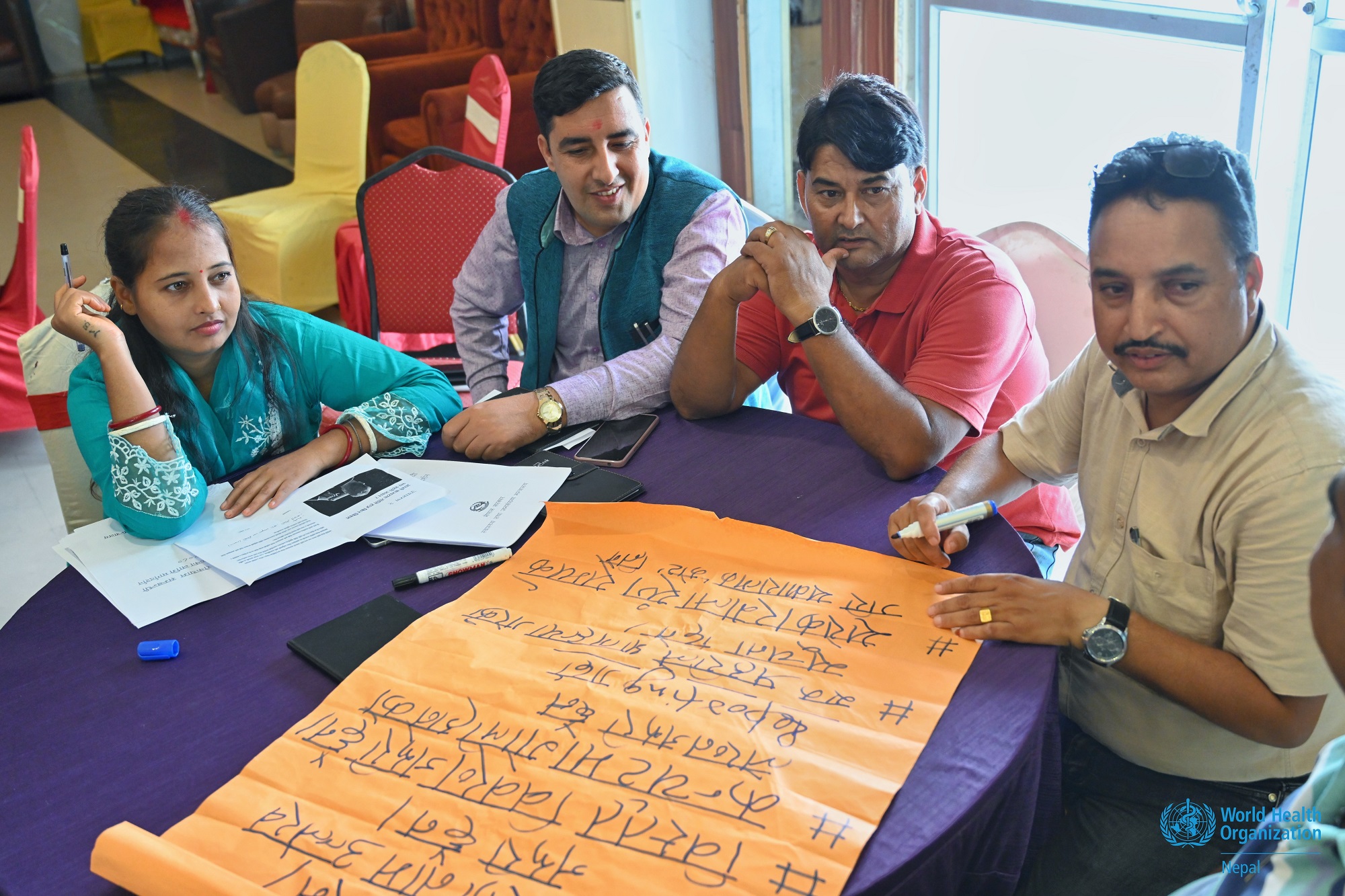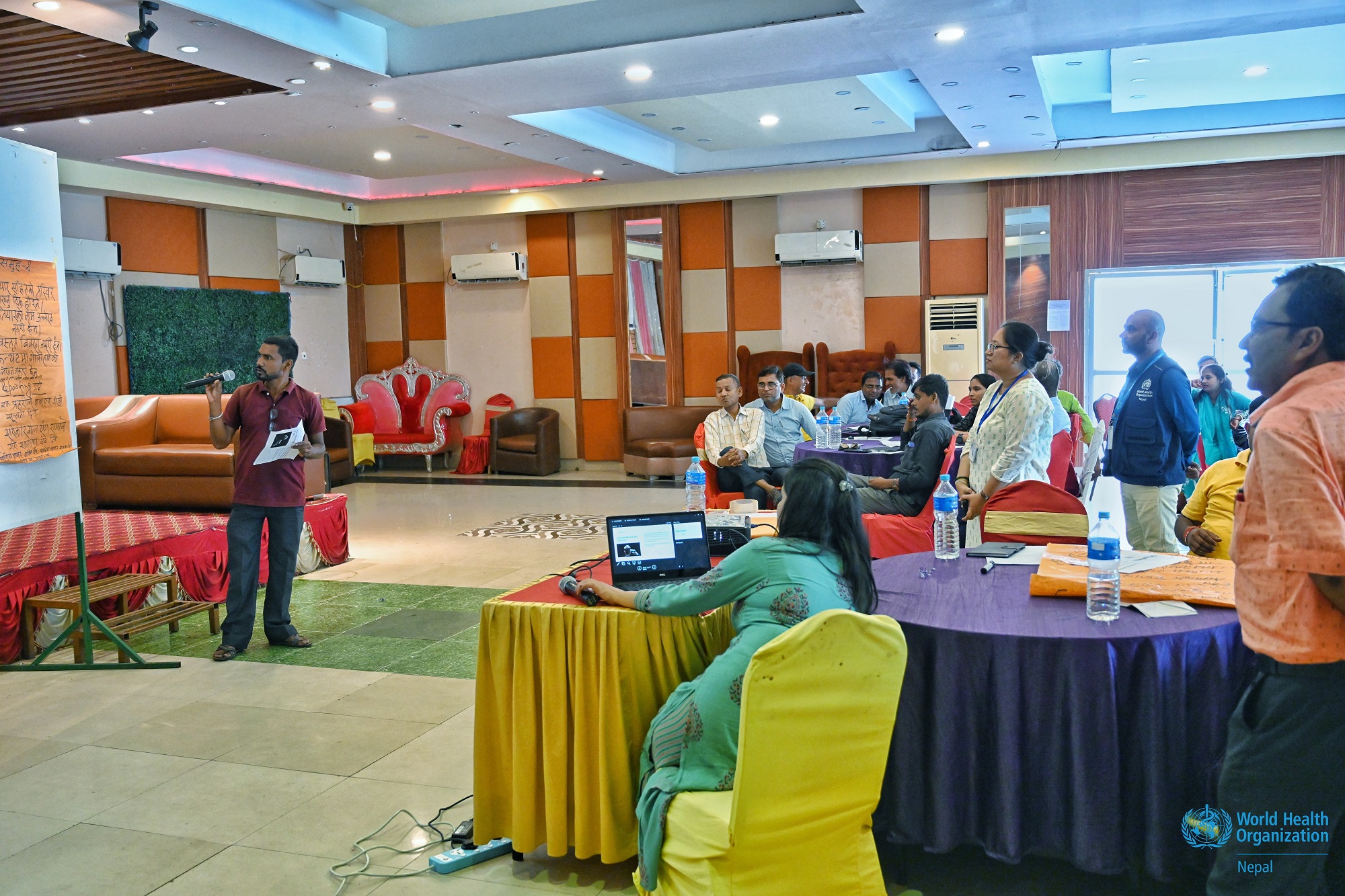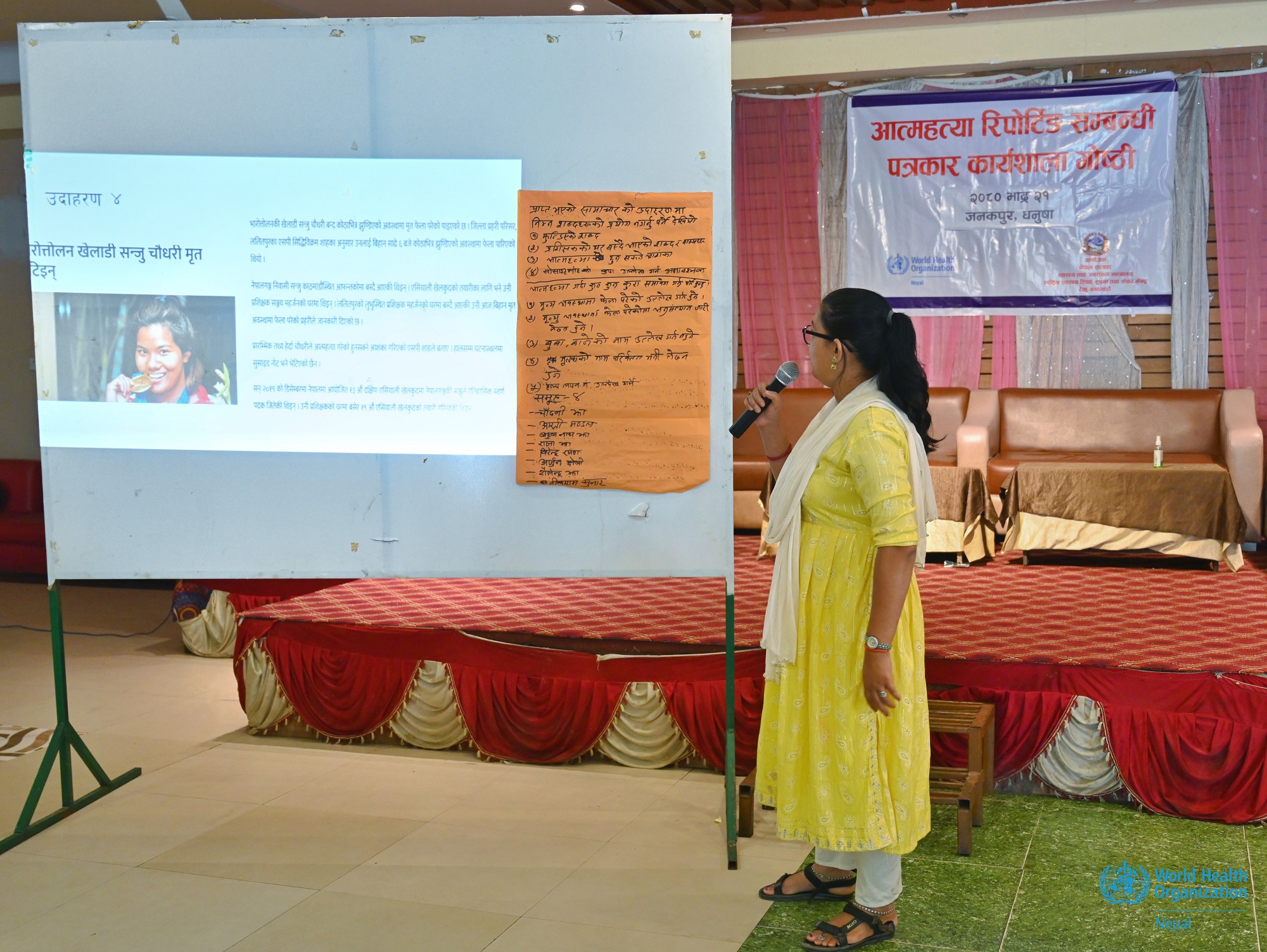Media plays an important role in mental health promotion and suicide prevention efforts by providing useful educational information about suicide aimed at increasing awareness, reducing misconceptions, and promoting help-seeking behavior.
However, inappropriate reporting can inadvertently promote suicides by increasing the risk of imitative behaviors, especially when media coverage is extensive, explicit, sensational, and condones or repeats widely held myths about suicide. The risk is even higher when the person being reported on has a high social status and/or can easily be identified.
Thus, responsible reporting about suicide prevention must center on educating the public about the ways to address suicide or self-harm. This helps to promote a more meaningful dialogue around suicide and may encourage persons who are having thoughts of suicide or self-harm to take alternative action.
To strengthen suicide prevention efforts in Nepal through the promotion of responsible reporting about suicide, WHO has been supporting the National Health Education Information and Communication Center (NHEICC), under the Ministry of Health and Population in Nepal, to orient journalists on the National Guideline on Responsible Suicide Reporting. This publication is adapted from WHO’s “Preventing Suicide, A Resource for Media Professionals.”

Journalists reviewing the strengths and weaknesses of current reporting on suicides during the media workshop on responsible media reporting on suicide and attempted suicide held in Janakpur, Madhesh Province. Photo credit: WHO Nepal/P. Lamichhane
The NHEICC and WHO are engaging journalists in putting these guidelines into practice by actively orienting them on the new guideline in all seven provinces in Nepal.
So far, over 250 media professionals have been oriented on the new national guideline for responsible reporting on suicide in Madhesh, Bagmati, Gandaki, Karnali, and Sudurpashchim provinces of Nepal. The first batch of journalists were trained in November 2021.

Mr Sunil Raj Sharma, Director of the National Health Education, Information and Communication Centre (middle), participating in the media workshop on responsible media reporting on suicide and attempted suicide held in Dhangadhi, Sudurpashchim Province. Photo credit: National Health Education, Information and Communication Centre
The series of workshops saw the participation of active media journalists, the NHEICC team, provincial health directors, and mental health experts, all with the support and coordination of the respective province chapters of the Federation of Nepali Journalists.
Topics such as the role of media on mental health promotion, stigma reduction, and suicide prevention; demystifying suicide and self-harm; current and best practices, including analyzing examples of poor suicide reporting; and addressing suicide-related misinformation were covered during the training.

A media personnel presenting on analyzing examples of poor suicide reporting during the workshop held in Janakpur, Madhesh Province. Photo credit: WHO Nepal/P. Lamichhane
The discussions at the workshop have helped participants understand the multifaceted and complex nature of suicide, revealing critical insights into the major causes of suicide, including factors such as alcohol abuse, deteriorating financial conditions, broken families, drug abuse, declining health, lack of emotional support, inadequate psychiatric consultation, and shortcomings in the education system. Discussions were also held around provincial data on suicide and budget allocation for its prevention.
“Media plays a pivotal role in our efforts to prevent and reduce suicides. This guideline, which contextualizes its content to Nepal’s diverse cultural, age, and gender factors, will not just help the journalists, but also their readers. I am hopeful that the journalists will adopt the dos and don’ts mentioned in the guideline and their stories about suicide will now ignite the feeling of hope rather than despair in their readers,” said Mr Sunil Raj Sharma, Director of the NHEICC.
The NHEICC and WHO will now organize workshops in the remaining provinces and formally disseminate the guideline in Kathmandu.

A media personnel shares how the new guidelines can be incorporated in suicide reporting at the workshop held in Janakpur, Madhesh Province. Photo credit: WHO Nepal/P. Lamichhane
“Preventing suicide is no easy task. Current research indicates that while the prevention of suicide is feasible, it involves a comprehensive series of activities. And responsible reporting is one of them. WHO is proud to have supported these important trainings, and I am positive that we’ll begin to see its impact on the stories that follow,” said Dr Rajesh Sambhajirao Pandav, WHO Representative to Nepal.
You can view and download the guidelines in English (link here) and Nepali (link here).
